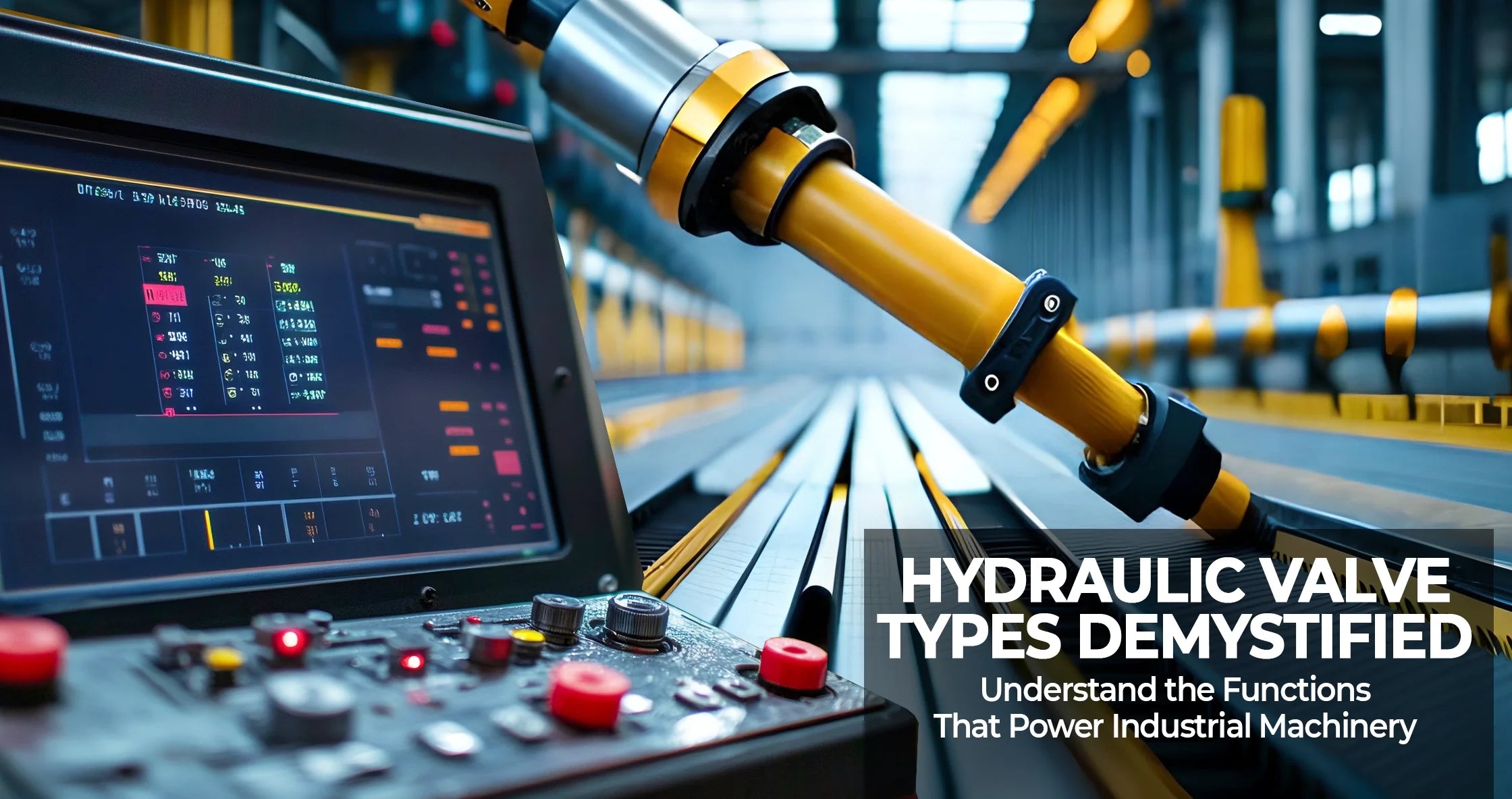Hydraulic systems are the muscle behind a wide array of machinery used in manufacturing, construction, agriculture, and other industrial sectors. At the heart of these systems lie hydraulic valves. Understanding the different hydraulic valve types is essential for anyone designing, operating, or maintaining hydraulic equipment. This guide explores the primary categories of hydraulic valves, their functions, and examples of real-world applications to help you choose the right component for your needs.
Understanding Hydraulic Valve Types
Hydraulic valves regulate the flow and pressure of hydraulic fluid within a system. Selecting the correct hydraulic valve type is critical for ensuring safety, precision, and efficiency. Common categories include directional control valves, pressure control valves, and flow control valves.
Directional Control Valves: Managing the Flow Path
Directional control valves are the most widely used hydraulic valve types. They manage the direction in which hydraulic fluid flows, thus determining the movement of actuators such as cylinders and motors. These valves are commonly found in equipment like excavators, injection molding machines, and forklifts.
Types of Directional Control Valves:
- Two-way valve: Allows fluid to flow in and out of a single port, often used in simple on/off applications.
- Three-way valve: Common in single-acting cylinders, this valve routes fluid to the cylinder or tank.
- Four-way valve: Essential for double-acting cylinders and motors, this valve can control the direction and movement of actuators.
Applications:
- Excavator boom control
- Hydraulic presses
- CNC machinery
Directional valves are often solenoid-operated, manually actuated, or pilot-operated, giving flexibility depending on the system design.
Pressure Control Valves: Maintaining Safe Operating Pressure
Among the most critical hydraulic valve types are pressure control valves. They are designed to protect the hydraulic system from pressure spikes that can cause component failure or safety hazards.
Main Types of Pressure Control Valves:
- Pressure Relief Valves: Open when system pressure exceeds a preset limit, allowing fluid to flow back to the reservoir.
- Pressure Reducing Valves: Maintain a reduced outlet pressure in part of the system.
- Sequence Valves: Direct fluid to a second actuator once a preset pressure is achieved in the first.
- Unloading Valves: Divert fluid back to the tank when system pressure reaches a specific point, often used in accumulator circuits.
Applications:
- Safety protection in hydraulic power units
- Preventing motor or cylinder damage from excess pressure
- Staged operations in press machines
Selecting the right pressure control valve ensures system longevity and operator safety.
Flow Control Valves: Regulating Speed and Performance
Flow control valves are another essential hydraulic valve type used to adjust the speed of actuators by regulating the fluid flow rate.
Common Flow Control Valves:
- Throttle Valves: Simple devices that restrict fluid flow to control actuator speed.
- Needle Valves: Allow precise control over flow through adjustable orifices.
- Compensated Flow Control Valves: Maintain constant flow despite changes in load pressure.
Applications:
- Regulating conveyor belt speed
- Fine-tuning robotic arm movements
- Synchronizing multiple cylinder movements
Inaccurate flow regulation can lead to inefficient performance or component wear, making proper valve selection vital.
Specialized Hydraulic Valves
Beyond the core hydraulic valve types, there are several specialized valves designed for niche applications:
- Pilot Operated Valves: Offer better control for high-pressure systems.
- Proportional Valves: Electronically control flow and pressure, ideal for automation.
- Check Valves: Allow flow in only one direction, preventing backflow.
- Cartridge Valves: Compact and modular, perfect for integrated circuits in mobile machinery.
These advanced valves are often used in sophisticated systems requiring high precision or compact solutions.
Choosing the Right Hydraulic Valve Type
When selecting hydraulic valve types for your system, consider the following:
- Function: Do you need to control flow, direction, or pressure?
- Operating Pressure: Ensure the valve can handle your system’s pressure range.
- Flow Rate: Match the valve’s capacity with system requirements.
- Environment: Some valves are better suited for harsh or mobile environments.
- Control Method: Manual, electrical, hydraulic, or pneumatic actuation?
Correct selection ensures optimal performance, safety, and cost-efficiency.
Conclusion
Understanding the various hydraulic valve types is essential for designing, maintaining, and troubleshooting hydraulic systems. Directional control valves direct fluid paths, pressure control valves maintain safe and effective pressure levels, and flow control valves regulate actuator speed. Specialized valves further refine system performance for unique operational demands. By identifying the correct valve type and its application, professionals can boost efficiency, reduce downtime, and ensure operational safety.
Explore Related Products:
Visit Industrial Electrical Warehouse to browse high-quality hydraulic essentials that match your hydraulic system needs.


